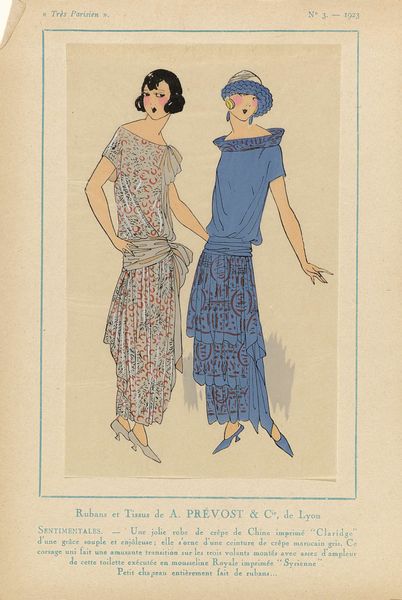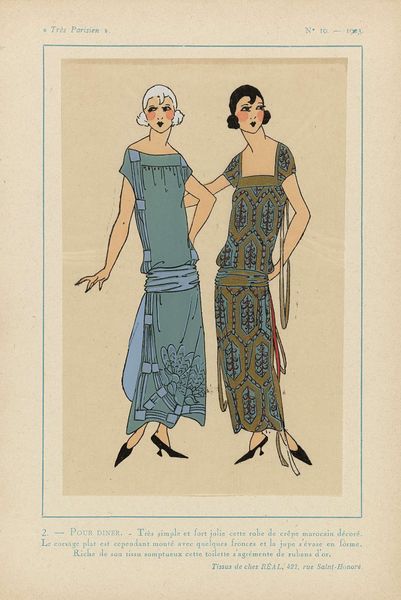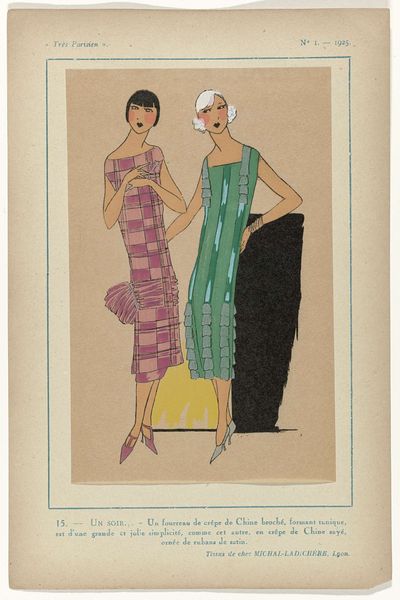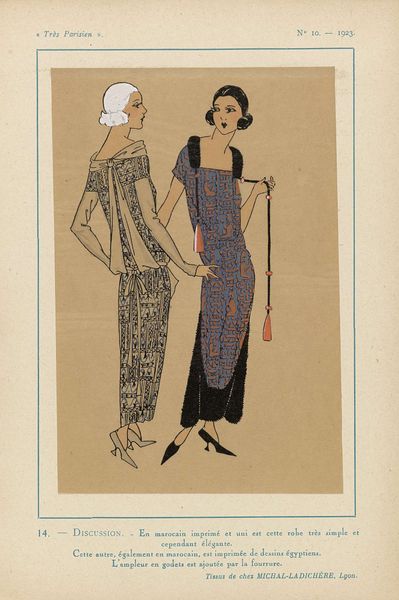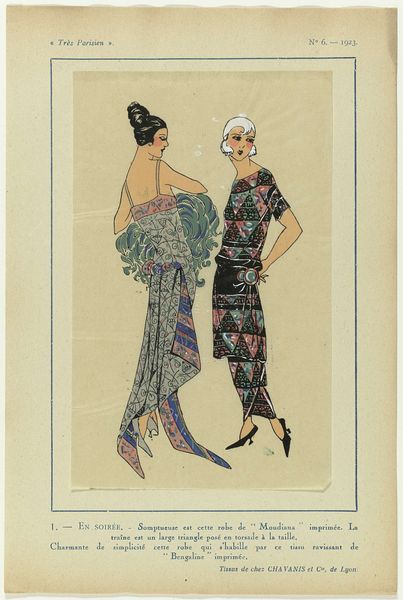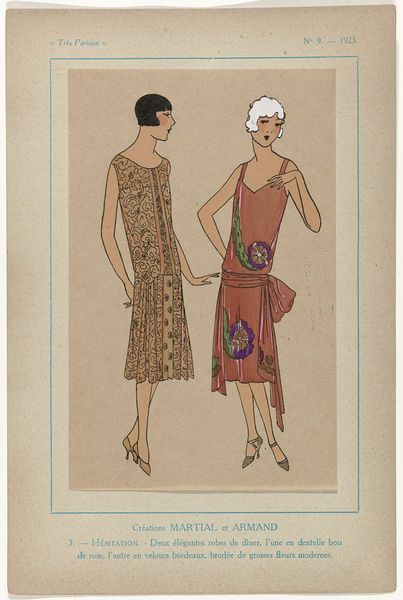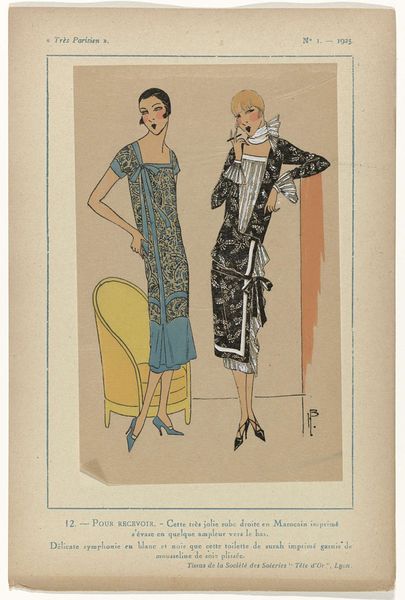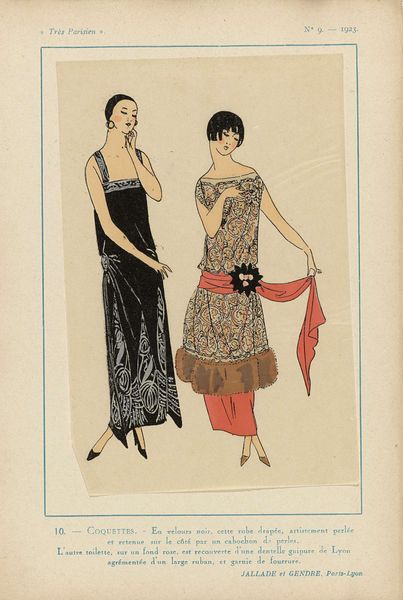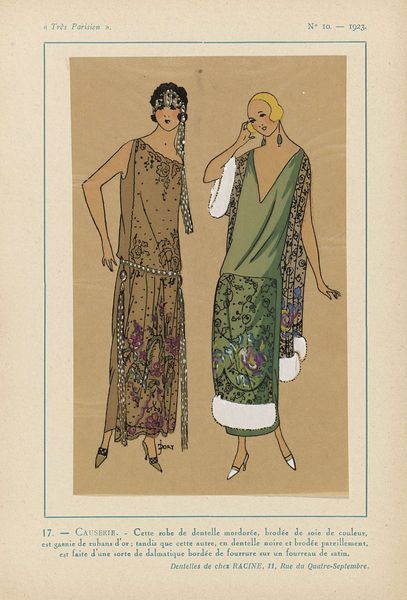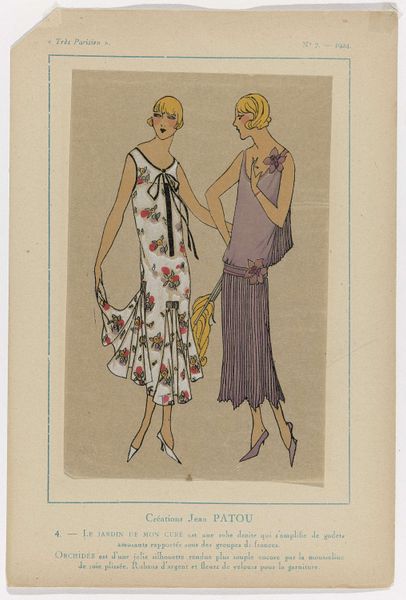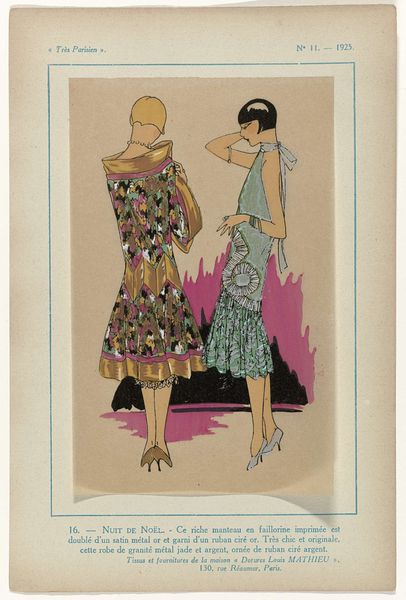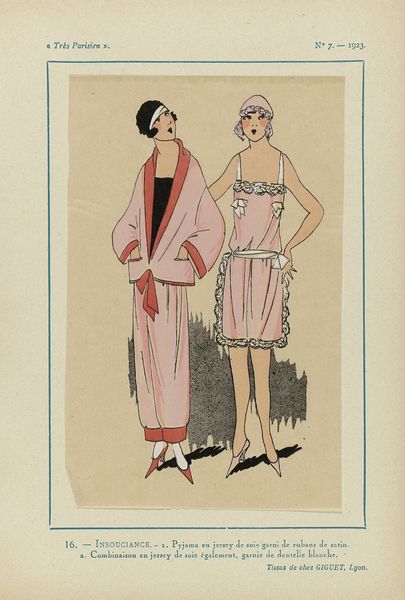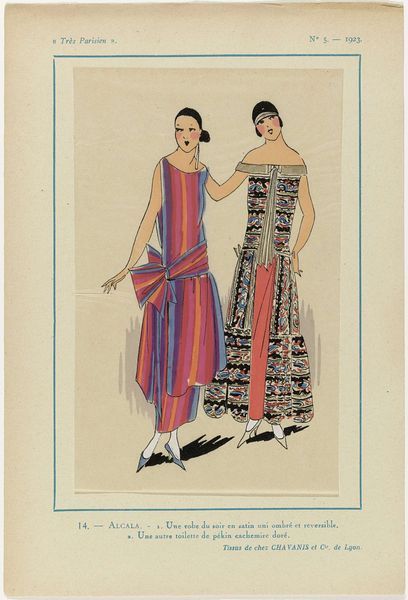
Très Parisien, 1923, No 11: 2.- GEORGINE. - Originales et jolies... 1923
0:00
0:00
drawing, mixed-media, print
#
portrait
#
art-deco
#
drawing
#
mixed-media
#
pastel soft colours
# print
#
pastel colours
#
fashion and textile design
#
figuration
#
historical fashion
#
dress
Dimensions: height 269 mm, width 180 mm
Copyright: Rijks Museum: Open Domain
Curator: This print, titled "Très Parisien, 1923, No 11: 2.- GEORGINE. - Originales et jolies...", immediately brings to mind the post-war consumption boom of the Art Deco era. The mixed media of drawing and print really speaks to mass production, and in that way the commercial intent is clear. Editor: It does have that aspirational feel, right? What really strikes me is the depiction of these dresses, they appear like prototypes almost? What are your thoughts on the textile industry connections here? Curator: Precisely. Look at how the materials are being presented. It isn't about artistry here. The anonymous artist shows us the labor behind fashion and how it feeds into the machine of consumerism. What materials are being suggested by the piece? Editor: Based on the OCR text, it mentions velvet, lame. Given its artistic function as a prototype, it's showcasing different textile choices available to the consumer. Also how fabric production enables and even anticipates future trends in fashion... Curator: Excellent. The emphasis on "Tissus de chez REAL" even provides some sort of authenticity or endorsement that gives agency to specific brands who controlled production. How does this commercial connection inform the way the piece is consumed or even thought of as "art"? Editor: Wow, that shifts my whole perspective. It highlights the role of art not just in reflecting society but in actively shaping consumer culture, it makes you really think of the labour behind them too and if we’re actually disconnected from that... Curator: Exactly. Considering the medium of the print is key. The artist likely designed the piece to fulfill a certain commercial need. Understanding the economics shifts the appreciation away from some conventional definition of art, but into industrial design and capitalist consumer culture, no? Editor: I see what you mean. It challenges traditional notions of art by bringing in the element of commercial design and labor to the forefront, blurring that high art and craft distinction and it brings more questions too. I never looked at prints like that.
Comments
No comments
Be the first to comment and join the conversation on the ultimate creative platform.
